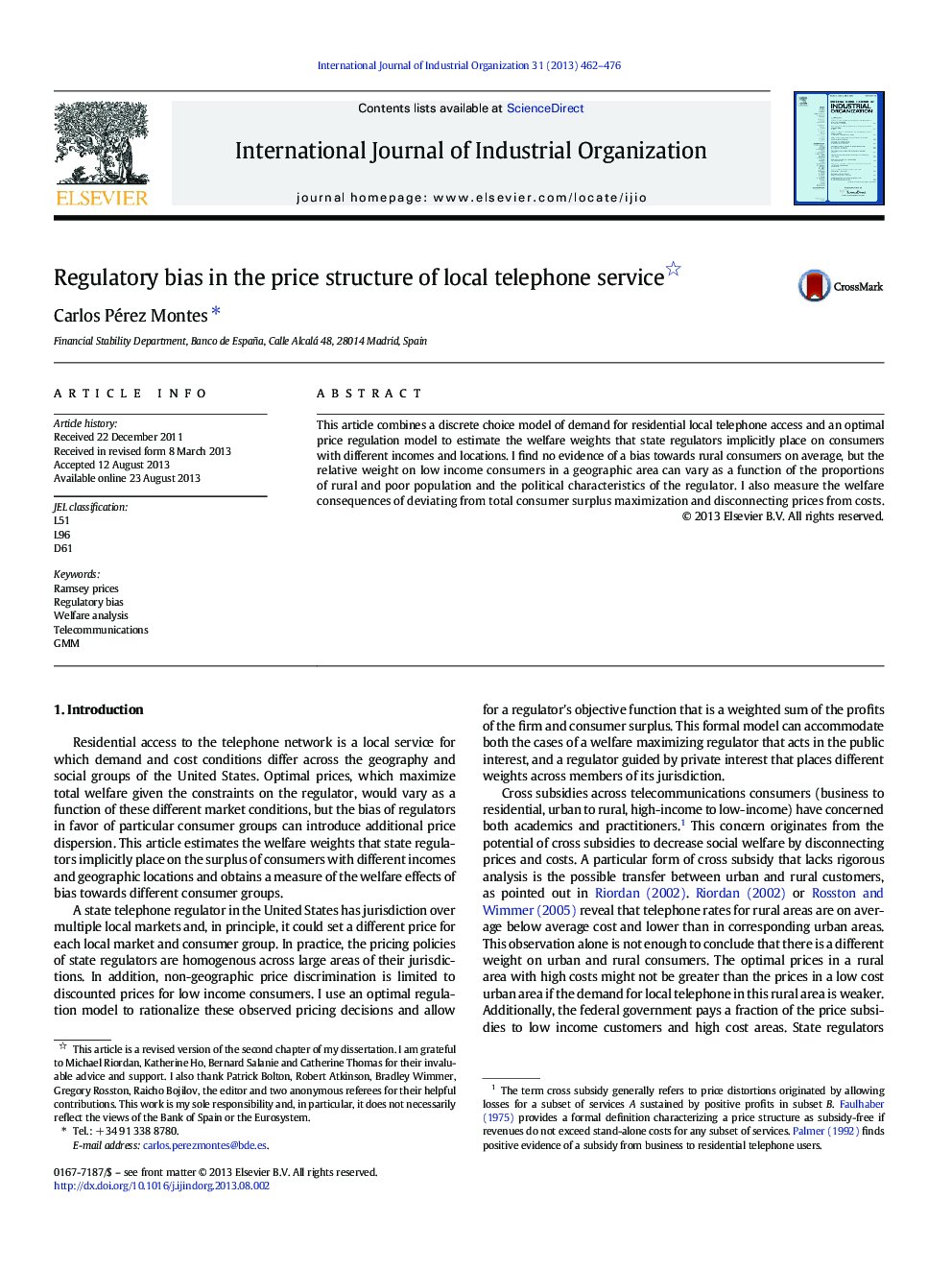| Article ID | Journal | Published Year | Pages | File Type |
|---|---|---|---|---|
| 5078116 | International Journal of Industrial Organization | 2013 | 15 Pages |
Abstract
This article combines a discrete choice model of demand for residential local telephone access and an optimal price regulation model to estimate the welfare weights that state regulators implicitly place on consumers with different incomes and locations. I find no evidence of a bias towards rural consumers on average, but the relative weight on low income consumers in a geographic area can vary as a function of the proportions of rural and poor population and the political characteristics of the regulator. I also measure the welfare consequences of deviating from total consumer surplus maximization and disconnecting prices from costs.
Related Topics
Social Sciences and Humanities
Economics, Econometrics and Finance
Economics and Econometrics
Authors
Carlos Pérez Montes,
